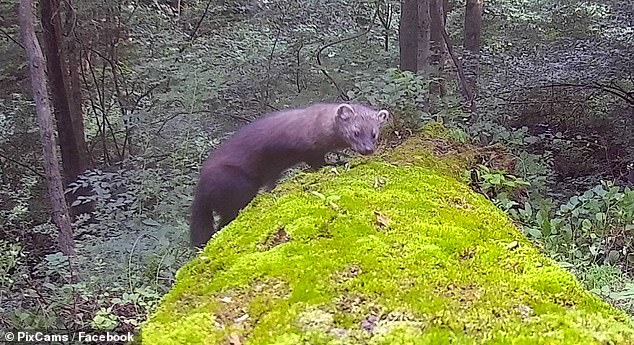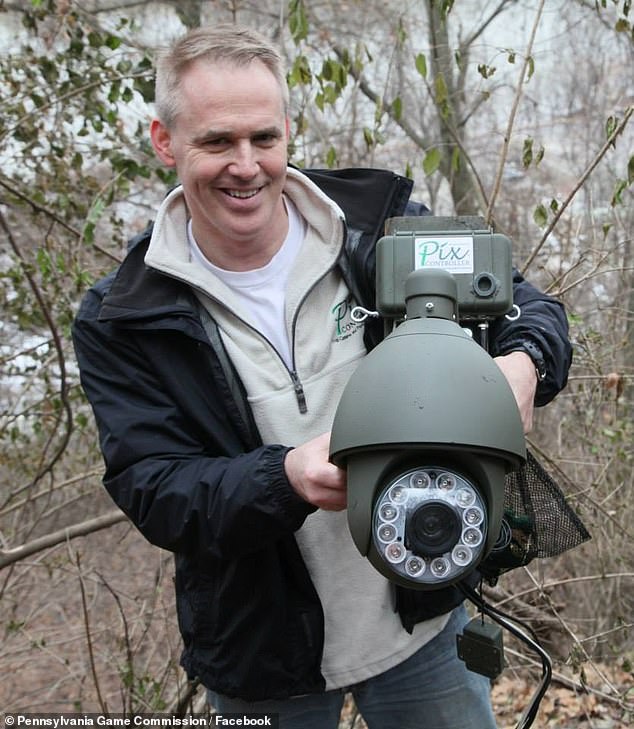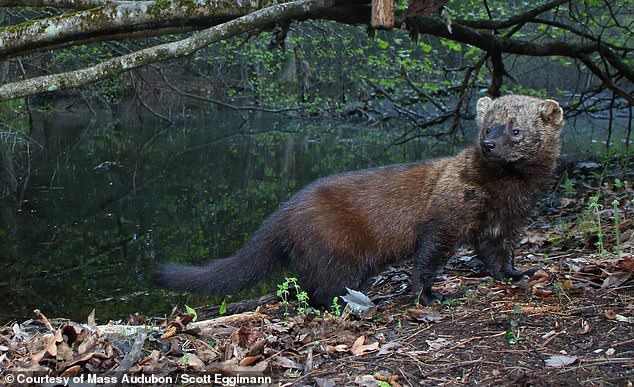
An elusive creature known for its ferocious hunting skills has been caught on camera during a rare sighting in Pennsylvania.
This was thought to be a sleek, forest-dwelling mammal known as a fisher eliminated in the Keystone State due to unregulated hunting and massive deforestation in the late 19th century.
At the time of the last trailcam sighting in the Murrysville forest, the fisherman had previously only been spotted in areas two to three hours away.
“I placed the camera on an old fallen log in a remote area and left it there for several months,” said Bill Powers, founder of wildlife streaming service PixCams. Murrysville Star.
“I took out the SD card last week and to my surprise a photo of a fisherman was captured in mid-June,” he continued.
The forest-dwelling mammal known as fisher was eliminated in Pennsylvania in the late 1800s due to unregulated hunting and massive deforestation

Bill Powers, founder of wildlife streaming service PixCams, recently posted the footage of a fisherman and described the sighting as ‘like Christmas morning’
Powers described finding the images as “like Christmas morning.”
‘You never know what you see. That was the case yesterday,” he added.
The fisher is a medium-sized carnivore and the second largest member of the weasel family in Pennsylvania.
Adult males can weigh up to 15 kilos and females up to nine kilos. Males are typically longer, ranging from 35 to 48 inches, while females are usually between 30 and 37 inches.
Surprisingly, fishermen are not named for their fishing skills, as the omnivorous member of the weasel family does not typically eat fish.
Instead, the animal was named for its similar characteristics to the European polecat, or ‘fitch’.

At the time of the unusual sighting, spotted by live streaming wildlife cameras, the fisherman had only been seen in areas two to three hours away.

Surprisingly, fishermen are not named for their fishing skills, as the omnivorous member of the weasel family does not typically eat fish, but was instead named for its similar characteristics to the European polecat, or ‘fitch’.
Fishermen use scent to locate prey and are known for their remarkable ability to sneak up on porcupines – and it is one of the few mammals to do this.
A porcupine’s dangerous quills make them difficult to kill, but the stealthy fisherman targets the rodents’ vulnerabilities, such as their heads and faces.
Fishermen also hunt rabbits, squirrels, raccoons, mice, reptiles and occasionally outdoor cats.
The forest mammal is unique among forest carnivores in that they are well adapted to forage effectively both in the canopy and on the ground, often chewing on berries and fruits.
The fisher is most commonly found in Massachusetts, New England, New York and southern Canada, with few sightings in Pennsylvania.

Powers, whose goal is to help people connect with nature through his live-streamed wildlife recordings, described the sighting as “super rare, kind of like finding a needle in a haystack.” Pictured: Bill Powers installing an outdoor camera fixture
As loggers and ranchers cleared much of the forest land to make way for industry, the fisher population declined before intentional reintroduction efforts by wildlife advocates brought them back to northern New England.
The fisher is known to avoid open areas such as fields and roads, preferring forest habitats – which have been affected by climate change.
Powers, whose goal is to help people connect with nature through his live-streamed wildlife recordings, described the recent sighting as “super rare, kind of like finding a needle in a haystack.”
